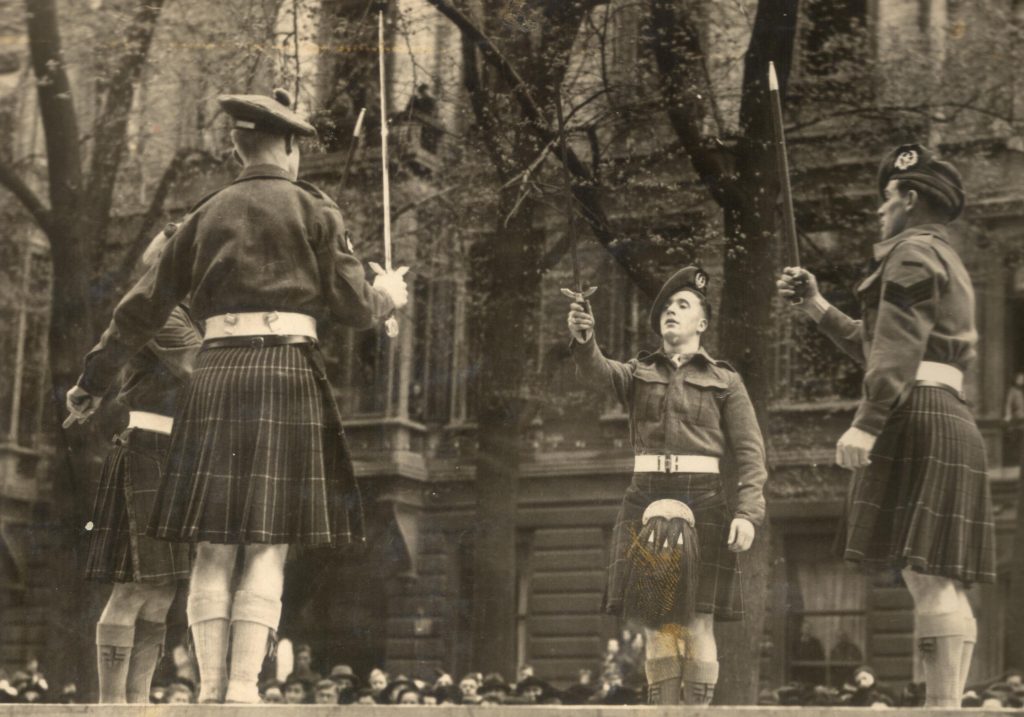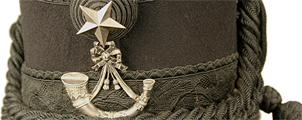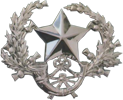The Second World War – 75 Years on
This year sees the 75th anniversary of the end of the Second World War. Great Britain entered the War on 3rd September 1939; after six years of bitter fighting on land, sea and in the air, the War finally ended in 1945. Germany surrendered to the Allies on 8th May 1945. Only after atomic bombs were dropped on the cities of Hiroshima and Nagasaki, did Japan finally surrender on 15th August 1945, bringing the war to a final close.

Low Parks Museum had planned to mark the 75th anniversary of the end of the War with a commemorative exhibition, exploring a number of personal stories and experiences of men from The Cameronians (Scottish Rifles) and the Lanarkshire Yeomanry (with our friends in The Lanarkshire Yeomanry Group). Current events have sadly put the exhibition on hold for the time being but it is hoped we may be able to feature some of the planned content in the Museum at some point later in the year.
While the Museum itself is currently closed in line with Government guidelines, we will continue to bring you stories, photographs and collections content through the regimental collections blog. The material that would have formed the basis for our exhibition will be covered in a series of blog posts over the coming weeks and months. We will continue to highlight and promote new posts through the Low Parks Museum Facebook page, so please make sure to ‘like’ the Page to keep up to date with our latest content. We are always interested to hear of your own family stories, so if you have any photographs, stories or objects from the War that you would like to share, we’d love to see them on the Facebook page.
Our first Second World War – 75 years On post will be landing very soon, so stay tuned!
Comments: 3



Barrie, this sort of detail and (at least to me) unseen photographs is fascinating. I have a hint that the swords were borrowed, not surprisingly as the officers would have left theirs at home at the outbreak of war.
From the well-fitted kilts it seems to me that the dancers, probably preparing to dance the Argyll Broadswords, were all pipers. I wonder if there are any captions or further clues to that?
Another interesting thing to note is their hose (stockings to the uninitiated): not at all a regimental pattern but probably a hangover from their time spent outside Europe – and there lies another story.
This, the second regular battalion, always known as the 2nd Scottish Rifles, had an extraordinary time. At the start of the war they were sent to France and took part in the fighting retreat to Dunkirk in 1940. After a period in UK (though never in one place for any length of time) they were then warned for overseas service and in March 1942 sailed from Glasgow bound for India via South Africa. They then took part in the taking and occupation of Madagascar (then a French colony) before moving on to Bombay at the end May. Their stay there was a short one: by September they had sailed to Basra in Iraq and from there they went by train to Qum about 70 miles south of Tehran in Persia (Iran) where they spent a vedry cold winter. The following February they moved again and this time to Damascus, Syria, stopping briefly in Baghdad en route. In June they were moved once more and this time to El Shatt, East of Suez (Egypt) in preparation for the assault on Sicily.
After a successful campaign and the retaking of Sicily, 2 SR’s next role was in the invasion of the extreme south of the toe of the Italian mainland in early September. They spent the winter in southern Italy fighting on north in atrocious weather. After a pause their next engagements, in March, were in support of the Anzio bridgehead just south of Rome where they encountered stiff opposition from the Germans. By June Rome had been liberated and the Pipes and Drums played in the city on at least two occasions. Come July their part in the Italian campaign was over and they returned to the Middle East to refit and to retrain.
From Palestine, in Spring 1945, the battalion moved back to Italy and from Naples they sailed to Marseilles and from there they went by train – taking three days – before they arrived at Ghent on 4 March 1945.
The war was not to end without further action though this did not take place until its the dying days . They passed into the Rhineland in mid-April and saw some sharp action by stubborn resistance and some heavy fighting. On 1 May they crossed the Elbe and two days later they were in Lubeck where the entire staff of the German 27th Corps surrendered at battalion HQ. The German armies surrendered on the 6th.
(All of this is to be found in Volume III of the Regimental History written by Brigadier CN Barclay CBE DSO, himself a previous commanding officer.)
Looking for information on Captain Norman Richard Munn – N R Munn – 2nd Batt. I have a large NCO size Cameronians cap badge that has his named scratched on the reverse – “Capt N R Munn”. I am trying to find if he was an NCO promoted to officer on 20 Jan 1940, or if he went straight into officer ranks.
I know Capt Munn died on Sicily in July 1943, but don’t know any details. Any information on Capt N R Munn would be greatly appreciated.
Re the cap badge: the slightly larger version of the cap badge is an officer’s one. NCO’s wore the same as the Other Ranks. Traditionally officers’ cap badges were silver and not white metal so it would be worth checking first if it tarnishes and then have a look at the reverse to see if there is a silver hall-mark or, if it was made on the continent, perhaps a silver purity number such as 925. The fact that his name is scratched onto it suggests that it was of value and not something which could be replaced by the Quartermaster.
The regimental history volume III (page 117) says that the action took place on the Plain of Catania on 19 July 1943. The battalion came under heavy fire. ‘The Commanding officer had ordered forward anti-tank guns which were towed across the bridge by jeeps….Enemy fire was now mostly falling on the south side of the river [Simeto] and the anti-tank platoon commander, Captain NR Munn was wounded by shell fire in bringing up his guns and later died in hospital.’